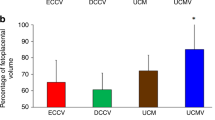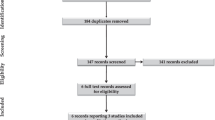Abstract
Objective:
We previously described a method for reducing early phlebotomy losses from very low birth weight (VLBW) neonates by obtaining the initial blood tests from otherwise discarded fetal blood from the placenta. In the present study we sought to; (1) measure the feasibility of performing this method in actual practice, (2) test the hypothesis that this method would result in higher hemoglobin concentrations and lower erythrocyte transfusion rates in the first week after birth.
Methods:
We conducted two studies in three Intermountain Healthcare NICUs. The first was a feasibility analysis involving 96 VLBW neonates, measuring the success of obtaining the NICU admission laboratory blood tests this way. The second study used case–control methodology to test the hypothesis that this method would result in a higher blood hemoglobin 12 to 24 h after birth, and a lower proportion receiving an erythrocyte transfusion in the first week.
Result:
In 91 of 96 VLBW neonates (95%) the initial blood tests were successfully obtained with this method. The success rate was not diminished by delayed cord clamping or cord milking, as it was successful in 35 of 36 (97%) such instances. Cases and controls were well matched on demographic and level of illness comparisons. Among cases the hemoglobin generally increased between birth and 12 to 24 h later, but among controls the hemoglobin generally decreased (P<0.05). In the week following birth fewer cases received vasopressors (P<0.01) and erythrocyte transfusions (P<0.001).
Conclusion:
We judge that it is feasible to collect the initial blood tests of VLBW neonates using otherwise discarded umbilical cord/placental blood, in that this can be accomplished in about 95% of VLBW deliveries. This method, which can be used in addition to either delayed clamping of the umbilical cord or cord milking, results in higher hemoglobin concentrations, less vasopressor use and fewer transfusions in the first week.
This is a preview of subscription content, access via your institution
Access options
Subscribe to this journal
Receive 12 print issues and online access
$259.00 per year
only $21.58 per issue
Buy this article
- Purchase on Springer Link
- Instant access to full article PDF
Prices may be subject to local taxes which are calculated during checkout
Similar content being viewed by others
References
Bishara N, Ohls RK . Current controversies in the management of the anemia of prematurity. Semin Perinatol 2009; 33: 29–34.
Rosebraugh MR, Widness JA, Veng-Pedersen P . Multidose optimization simulation of erythropoietin treatment in preterm infants. Pediatr Res 2012; 71: 332–337.
Lin JC, Strauss RG, Kulhavy JC, Johnson KJ, Zimmerman MB, Cress GA et al. Phlebotomy overdraw in the neonatal intensive care nursery. Pediatrics 2000; 106: E19.
Widness JA . Pathophysiology of anemia during the neonatal period, including anemia of prematurity. Neoreviews 2008; 9: e520.
Carroll PD, Widness JA . Nonpharmacological, blood conservation techniques for preventing neonatal anemia—effective and promising strategies for reducing transfusion. Semin Perinatol 2012; 36: 232–242.
Christensen RD, Lambert DK, Baer VL, Montgomery DP, Barney CK, Coulter DM et al. Postponing or eliminating red blood cell transfusions of very low birth weight neonates by obtaining all baseline laboratory blood tests from otherwise discarded fetal blood in the placenta. Transfusion 2011; 51: 253–258.
Carroll PD, Nankervis CA, Iams J, Kelleher K . Umbilical cord blood as a replacement source for admission complete blood count in premature infants. J Perinatol 2012; 32: 97–102.
Richardson DK, Corcoran JD, Escobar GJ, Lee SK . SNAP-II and SNAPPEE-II: Simplified newborn illness severity and mortality risk scores. J Pediatr 2001; 138: 92–100.
Baer VL, Henry E, Lambert DK, Stoddard RA, Stoddard RA, Wiedmeier SE et al. Implementing a program to improve compliance with neonatal intensive care unit transfusion guidelines was accompanied by a reduction in transfusion rate: a pre-post analysis within a multihospital health care system. Transfusion 2011; 51: 264–269.
Christensen RD, Henry E, Ilstrup S, Baer VL . A high rate of compliance with neonatal intensive care unit transfusion guidelines persists even after a program to improve transfusion guideline compliance ended. Transfusion 2011; 51: 2519–2520.
Christensen RD, Ilstrup S . Recent advances toward defining the benefits and risks of erythrocyte transfusions in neonates. Arch Dis Child Fetal Neonatal Ed; e-pub ahead of print 29 June 2012.
Leahy MF, Mukhtar SA . From blood transfusion to patient blood management: a new paradigm for patient care and cost assessment of blood transfusion practice. Intern Med J 2012; 42: 332–338.
Mathias JM . Blood management: reducing blood use reduces risks and lowers costs. OR Manager 2012; 28: 8–12.
Mercer JS, Vohr BR, Erickson-Owens DA, Padbury JF, Oh W . Seven-month developmental outcomes of very low birth weight infants enrolled in a randomized controlled trial of delayed versus immediate cord clamping. J Perinatol 2010; 30: 11–16.
Mercer JS, Vohr BR, McGrath MM, Padbury JF, Wallach M, Oh W . Delayed cord clamping in very preterm infants reduces the incidence of intraventricular hemorrhage and late-onset sepsis: a randomized, controlled trial. Pediatrics 2006; 117: 1235–1242.
Oh W, Fanaroff AA, Carlo WA, Donovan EF, McDonald SA, Poole WK et al. Effects of delayed cord clamping in very-low-birth-weight infants. J Perinatol 2011; 31: S68–S71.
Rabe H, Reynolds G, Diaz-Rossello J . Early versus delayed umbilical cord clamping in preterm infants. Cochrane Database Syst Rev 2004; (4): CD003248.
Hosono S, Mugishima H, Fujita H, Hosono A, Minato M, Okada T et al. Umbilical cord milking reduces the need for red cell transfusions and improves neonatal adaptation in infants born at less than 29 weeks’ gestation: a randomised controlled trial. Arch Dis Child Fetal Neonatal Ed 2008; 93: F14–F19.
Hosono S, Mugishima H, Kitamura T, Inami I, Fujita H, Hosono A et al. Effect of hemoglobin on transfusion and neonatal adaptation in extremely low-birthweight infants. Pediatric Int 2008; 50: 306–311.
Rabe H, Jewison A, Alvarez RF, Crook D, Stilton D, Bradley R et al. Milking compared with delayed cord clamping to increase placental transfusion in preterm neonates: a randomized controlled trial. Obstet Gynecol 2011; 117: 205–211.
Ohls RK . Why, When, and How Should We Provide Red Cell Transfusions And Erythropoiesis-Stimulating Agents to Support Red Cells Mass in Neonates? In: Ohls RK, Maheshwari A (eds) Hematology, Immunology and Infectious Disease, 2nd edn, Elsevier/Saunders: Philadelphia, 2012, pp 57–74.
Widness JA, Madan A, Grindeanu LA, Zimmerman MB, Wong DK, Stevenson DK . Reduction in red blood cell transfusions among preterm infants: results of a randomized trial with an in-line blood gas and chemistry monitor. Pediatrics 2005; 115: 1299–1306.
Neelakantan S, Widness JA, Schmidt RL, Veng-Pedersen P . Erythropoietin pharmacokinetic/pharmacodynamic analysis suggests higher doses in treating neonatal anemia. Pediatr Int 2009; 51: 25–32.
Acknowledgements
We thank Sarah J Ilstrup, MD, Director of Clinical Pathology and Director of Transfusion Medicine, Intermountain Healthcare, and Sterling T Bennett, MD, Central Laboratory Medical Director, Intermountain Healthcare, for their encouragement, advice and assistance with these studies.
Author information
Authors and Affiliations
Corresponding author
Ethics declarations
Competing interests
The authors declare no conflict of interest.
Additional information
Supplementary Information accompanies the paper on the Journal of Perinatology website
Supplementary information
Rights and permissions
About this article
Cite this article
Baer, V., Lambert, D., Carroll, P. et al. Using umbilical cord blood for the initial blood tests of VLBW neonates results in higher hemoglobin and fewer RBC transfusions. J Perinatol 33, 363–365 (2013). https://doi.org/10.1038/jp.2012.127
Received:
Revised:
Accepted:
Published:
Issue Date:
DOI: https://doi.org/10.1038/jp.2012.127
Keywords
This article is cited by
-
Neonatal blood culture inoculant volume: feasibility and challenges
Pediatric Research (2021)
-
Can cord blood sampling delay the first packed red blood cell transfusion?
Journal of Perinatology (2021)
-
The iron status at birth of neonates with risk factors for developing iron deficiency: a pilot study
Journal of Perinatology (2017)
-
Elevated fecal calprotectin levels during necrotizing enterocolitis are associated with activated neutrophils extruding neutrophil extracellular traps
Journal of Perinatology (2016)
-
New and underutilized uses of umbilical cord blood in neonatal care
Maternal Health, Neonatology and Perinatology (2015)



